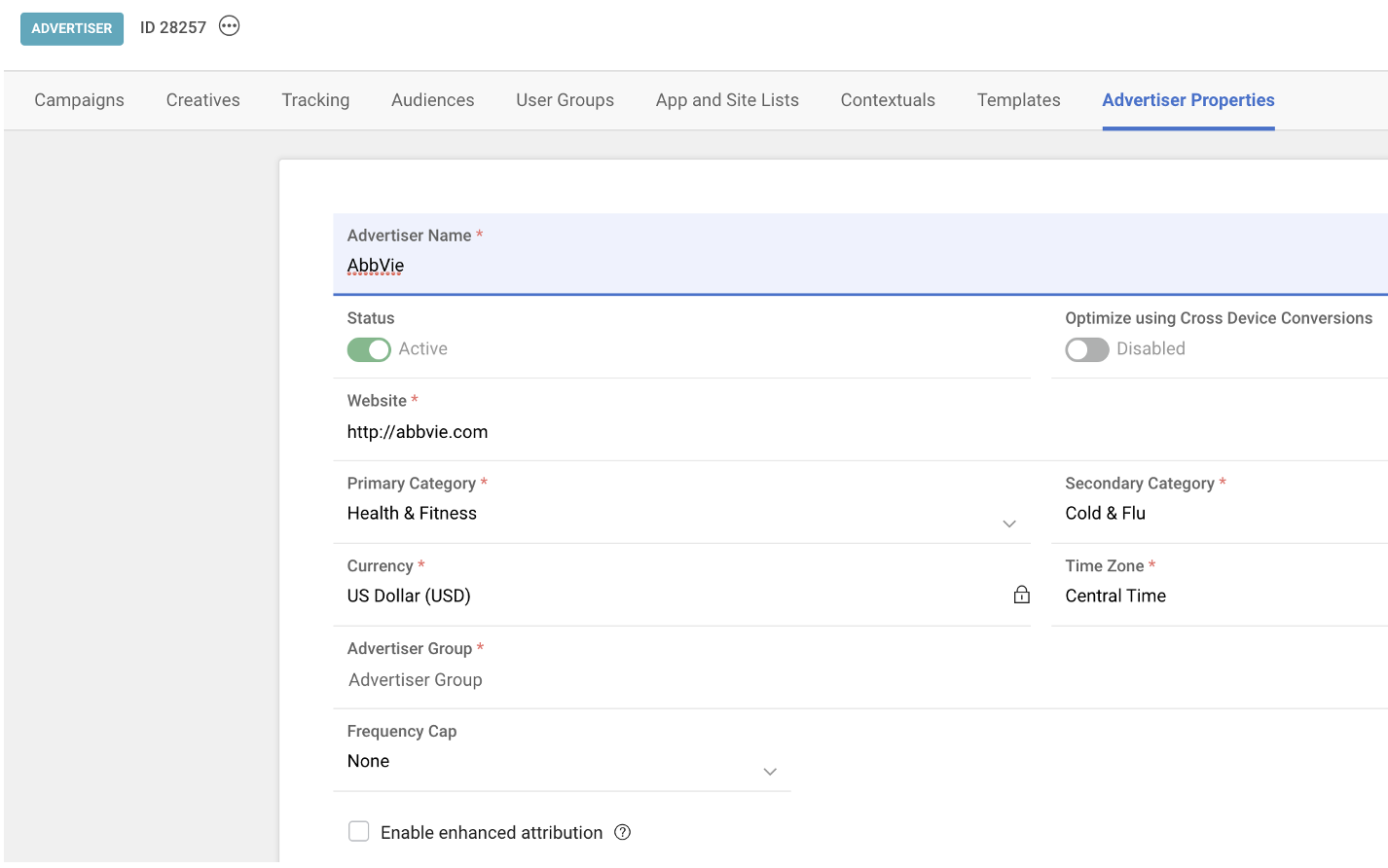- Open Source
- APIs
- Advertising
- Blog
- Events
- Podcasts
- Apps
- DSP API
- Documentation
- Traffic API
- Get Started
- Account Groups
- Ads
- Advertisers
- Audiences
- Beacons
- Bid Multipliers
- Campaigns
- Contextuals
- Creatives
- Bulk Upload Creative Data
- Data Dictionary
- Deals
- Digital Out Of Home
- Exchanges
- Inventory Sets
- Lines
- Packages
- Pixels
- Seats
- App & Site Lists
-
Targeting
- About Targeting
- A/B Testing
- Ad Initiation
- Ad Position
- ads.txt Targeting
- Beacons
- Fraud Avoidance
- Connection
- Contextuals
- Day Parting
- Demographics
- Deals & Exchanges
- DOOH Screen Lists
- DOOH Screen Owners
- DOOH Venue Types
- Frequency Capping
- Multi-Layer Frequency Capping
- Geography
- Inventory Type
- Languages
- Mobile Placement
- Native Lists
- Player Size
- Segments
- Site Lists
- Technology
- Video Ad Placements Targeting
- Video Content Length
- Viewability Targeting
- Weather Conditions
- Weather UV
- Weather Temperatures
- Weather Humidities
- User Groups
- Sign In
- Language:
How to Enable Enhanced Attribution¶
Abstract¶
Describes how to enable Enhanced Attribution in the Yahoo DSP UI.
Overview¶
Yahoo Ad Tech Enhanced Attribution works by leveraging a click ID to count post-click conversions, using a privacy-friendly mechanism that doesn’t require or depend on a 3rd-party cookie. These conversions are counted according to the attribution settings you’ve specified in your rule setup and meet all those rule conditions.
Important
Click IDs are not identifiers and cannot be used for post-impression conversions, modeling or any other audience-building solutions in the Yahoo DSP.
How It Works¶
To enable Enhanced Attribution on the Yahoo DSP ad platform, you’ll need to perform two basic steps:
Turn on the feature in the UI.
Ensure that a JavaScript Dot Tag is implemented on the client website.
In the DSP UI¶
In the Yahoo DSP UI, navigate to the Advertiser in your seat.
Click into Advertiser Properties in the top bar.

In the bottom left corner, click the Enable enhanced attribution button.

This automatically appends the Yahoo click ID macro (vmcid) to the destination url for the Yahoo dot pixel to pick up.
Based on your specific setup (for example, ad server or 3p tracking), you’ll need to ensure that the Click ID is being passed through correctly.
Refer to the documentation guides based on your specific tagging structure in the Ad Tech Identity hub on Yahoo Developer Network.